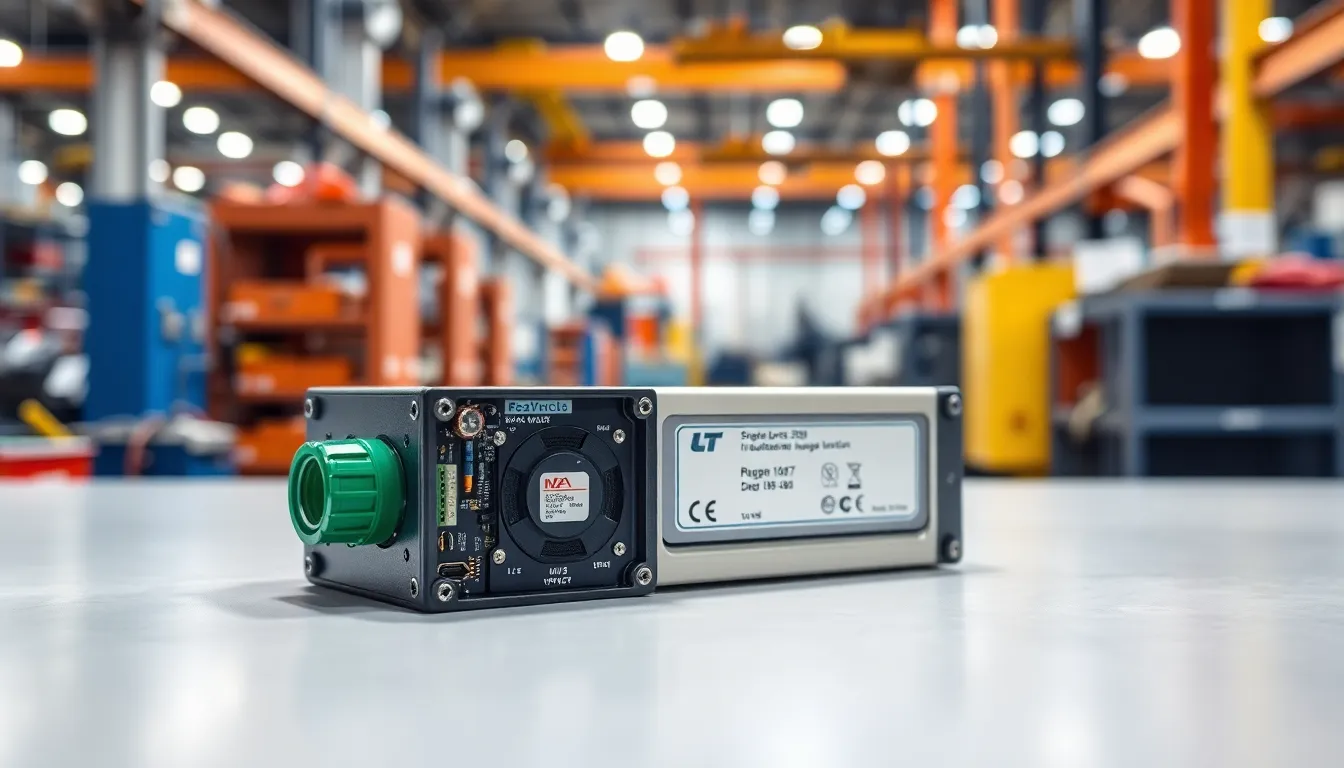In a world where everything from your fridge to your coffee maker is getting smarter, the Internet of Things (IoT) is leading the charge. But wait—what’s this mysterious term, “IoT Edge”? It’s not just a fancy buzzword; it’s the secret sauce that’s transforming how devices communicate and process data. Imagine your devices working together seamlessly without needing to shout across the room to the cloud.
iot edge
IoT Edge represents a transformative approach to data processing and device communication. This paradigm allows devices to perform data analysis closer to the source, leading to faster response times and reduced latency. By utilizing edge computing, IoT Edge minimizes reliance on cloud systems for real-time processing tasks.
Devices equipped with IoT Edge capabilities can manage data locally, enhancing security and privacy. Local data handling reduces the amount of information transferred to the cloud, resulting in lower bandwidth usage and operational costs. More importantly, this setup proves beneficial in scenarios demanding immediate decisions, such as industrial automation or smart transportation.
Real-world applications of IoT Edge illustrate its versatility. Smart factories leverage IoT Edge to analyze sensor data instantly, improving production efficiency. Similarly, healthcare providers use it for monitoring patient data in real time, allowing for timely interventions.
Moreover, businesses benefit from the scalability of IoT Edge solutions. Companies can deploy numerous devices without overwhelming central systems. As a result, they gain insights from large volumes of data without introducing significant delays or resource constraints.
Future developments in IoT Edge look promising. Enhanced algorithms and hardware innovations are expected to further improve processing capabilities. Organizations must prioritize investing in IoT Edge technology to stay competitive in this rapidly evolving landscape.
Key Components of IoT Edge

IoT Edge comprises essential elements that enhance device functionality and data processing capabilities.
Edge Devices
Edge devices function as the frontline of IoT Edge. These devices collect, process, and transmit data from various sensors and actuators. Common examples include smart cameras, industrial sensors, and IoT gateways. Each device operates locally, enabling real-time data analysis and reducing reliance on centralized cloud services. Through this localized processing, edge devices also lower latency and minimize data transmission costs. By handling immediate processing tasks, they allow for rapid responses in critical scenarios, such as manufacturing environments where speed is vital.
Edge Computing
Edge computing plays a pivotal role in IoT Edge’s architecture. This approach centralizes processing closer to data sources, enhancing efficiency in data management. It provides rapid processing power, allowing devices to analyze data in real time without waiting for cloud resources. With edge computing, organizations can address high-volume data streams effectively. Security also sees improvements since sensitive data can be managed locally, minimizing exposure during transmission. Systems leveraging edge computing maintain operational continuity even when cloud connectivity falters, ensuring reliability in critical applications.
Benefits of IoT Edge
IoT Edge provides several advantages that enhance device performance and efficiency. Key benefits include improved performance and reduced latency.
Enhanced Performance
Devices equipped with IoT Edge capabilities operate more effectively by processing data locally. Local processing minimizes the need to communicate with distant cloud servers. This shift allows for quicker analysis and action, empowering devices to respond to data inputs almost instantly. Organizations benefit from deploying fewer network resources while still achieving high operational efficiency. Businesses can also optimize their applications, leading to better resource management and overall productivity gains.
Reduced Latency
Reduced latency significantly improves real-time decision-making. By analyzing data at the edge, IoT systems bypass lengthy communication delays associated with cloud processing. This enhancement becomes crucial in time-sensitive applications, like industrial automation or smart cities. Immediate feedback results in more timely responses to changing conditions. In healthcare, for example, instant data processing can facilitate rapid interventions for patient care. Overall, reduced latency elevates the effectiveness of IoT solutions across various sectors.
Use Cases of IoT Edge
IoT Edge finds numerous applications across various sectors, enhancing operational efficiency and responsiveness. Two key use cases include smart cities and industrial automation.
Smart Cities
Smart cities leverage IoT Edge technology to create intelligent infrastructure. They utilize real-time data from connected devices to manage traffic, optimize energy consumption, and improve public safety. Sensors placed throughout urban areas collect data on air quality and noise levels, allowing city planners to address environmental concerns swiftly. High-resolution cameras support monitoring and assessing public spaces. Immediate responses to incidents enhance community resilience, fostering a safer, more efficient urban environment.
Industrial Automation
Industrial automation benefits significantly from IoT Edge by facilitating real-time data analysis. Factories incorporate edge devices to monitor equipment health and track production metrics. Local processing minimizes downtime by enabling predictive maintenance, which anticipates equipment failures before they occur. This immediacy enhances productivity by streamlining operations and reducing waste. Additionally, manufacturers can deploy smart robotics that communicate instantly with centralized systems, improving overall operational efficiency and responsiveness to production changes.
Challenges and Considerations
Addressing the challenges of IoT Edge technology requires careful consideration of security and integration.
Security Concerns
Security remains a critical challenge in IoT Edge deployments. Data processed and stored locally increases vulnerability to cyberattacks. Unauthorized access to edge devices can lead to data breaches or manipulation of control systems. Effective security measures must include robust authentication protocols and encryption techniques to protect sensitive data. Regular software updates also play a vital role in safeguarding against emerging threats, while intrusion detection systems can help monitor unusual activities. Organizations should prioritize establishing comprehensive security frameworks to assure users that their data is protected.
Integration Issues
Integration poses significant challenges when adopting IoT Edge solutions. Disparate devices need to communicate seamlessly, which can be difficult if manufacturers use varied communication protocols. Standardizing protocols enhances interoperability, but many enterprises still face compatibility issues during deployment. Additionally, scaling IoT Edge systems can hinder operational efficiency if not properly managed. Developers must consider developing integration strategies that facilitate smooth connectivity between devices and systems. Planning for future upgrades also aids in ensuring long-term operational viability.
Conclusion
Embracing IoT Edge technology is crucial for organizations aiming to enhance efficiency and responsiveness. The ability to process data locally empowers devices to act swiftly and intelligently. This shift not only reduces reliance on cloud connectivity but also strengthens security and privacy by managing data closer to its source.
As industries continue to adopt IoT Edge solutions, the potential for real-time applications will only grow. Investing in this technology now can provide a competitive edge in an ever-evolving digital landscape. With ongoing advancements in algorithms and hardware, the future of IoT Edge promises even greater capabilities and opportunities for innovation across various sectors.

